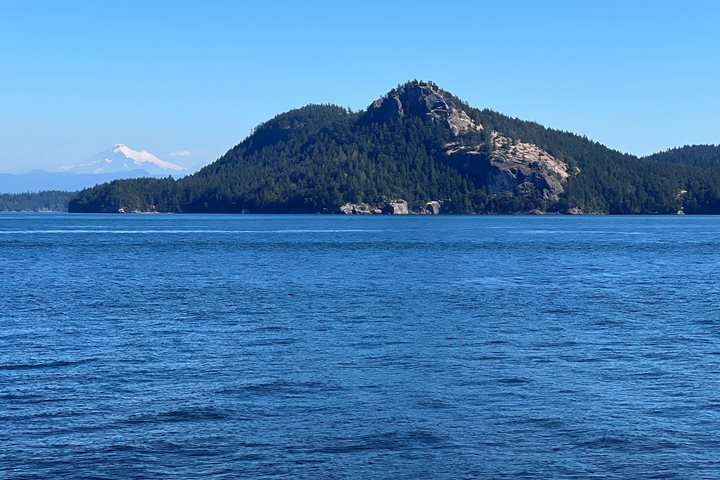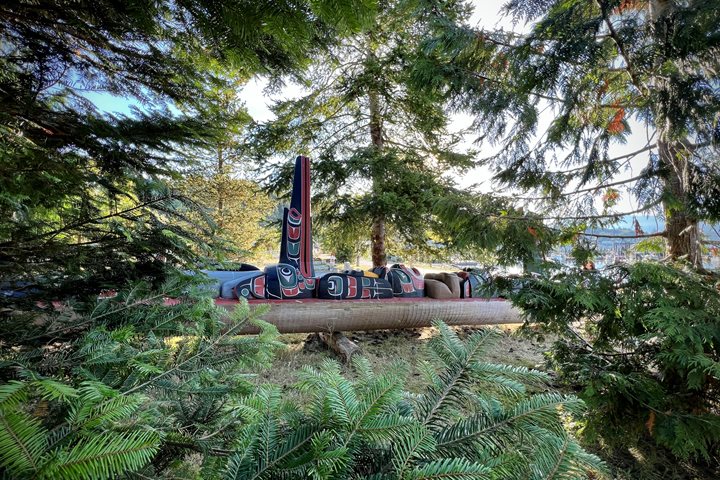National Geographic Sea Bird cruised south overnight and anchored this morning near the southern tip of the Haida Gwaii archipelago, which includes over 200 islands. It was sunny and very pleasant for our visit to the ancient village site and for our scenic small boat tours around the nearby islets. SGang Gwaay (Wailing Island) is within the Gwaii Haanas National Park Reserve and National Marine Conservation Area Reserve and has been a World Heritage Site since 1981. Also known as Ninstints, after a reigning chief, the SGang Gwaay Linagaay village was a major winter home of the Kunghit Haida. Concealed and protected against enemies, it thrived until communicable diseases brought by Europeans devastated the population and the people moved to the north. Many poles and artifacts were removed and only house pits and mortuary poles remain as a powerful legacy of Haida heritage. They can still be seen today as they erode back to the earth. We visited with the Watchmen who act as guardians and care for this sacred site during the summer, listened to their stories as they guided us through the area, and felt their connection with the land and their ancestors.
Some of us saw a young Sitka black-tailed deer and a hairy woodpecker during our time on the island. The deer have been introduced to Haida Gwaii, along with raccoons, rats, red squirrels, and 25% of plant species. These exotics can be very invasive and a threat to native flora and fauna. Haida Gwaii was an isolated ice age refugium in which survivors gave rise to a number of unique plants and animals, some of which are found nowhere else.
Marine habitats are also protected in this area. The dive team found many sea urchins and a ruby octopus among other creatures in this rich and diverse environment. Expedition landing craft cruises explored scenic inlets and searched for wildlife. Over one million seabirds nest on the remote and protected islands and a Steller sea lion rookery is nearby.
Much to the frustration of the hotel and galley crews our evening meal was interrupted by humpback and fin whales. Fin whales are the second longest of all the whales and are said to be the “greyhounds of the sea.” As the light was fading, we were satisfied after several breathing cycles and views of the prominent dorsal fin and we were happy to resume our meals.
After dinner a video, brought by our interpreter Vince, was shown in the lounge. It depicted the relationship between the Haida and the U.K. museums that manage the relic collections. The Haida are hopeful for repatriation of the artifacts to their rightful homeland someday.







